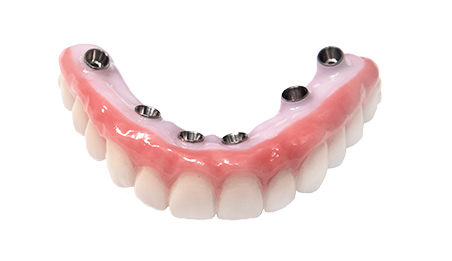See This Report about Dental Sense
See This Report about Dental Sense
Blog Article
The smart Trick of Dental Sense That Nobody is Talking About
Table of ContentsDental Sense Fundamentals Explained4 Simple Techniques For Dental SenseThe 6-Minute Rule for Dental SenseThe Of Dental Sense
are clinical tools surgically dental implanted into the jaw to bring back an individual's capability to chew or their appearance. They give assistance for artificial (phony) teeth, such as crowns, bridges, or dentures. When a tooth is shed because of injury or illness, a person can experience problems such as rapid bone loss, malfunctioning speech, or modifications to chewing patterns that cause discomfort.Dental dental implant systems contain an oral implant body and oral implant abutment and may likewise include an abutment fixation screw. Professional teeth whitening. The oral implant body is operatively placed in the jawbone instead of the tooth's origin. The dental implant abutment is generally connected to the implant body by the joint addiction screw and extends via periodontals right into the mouth to sustain the affixed man-made teeth
(https://myspace.com/dentalsense1)Structure of The Oral Implant System picking oral implants, speak to your dental supplier regarding the prospective benefits and risks, and whether you are a prospect for the procedure. Things to consider: Your general health and wellness is a crucial consider identifying whether you are an excellent prospect for dental implants, for how long it will certainly take to recover, and how long the dental implant might remain in location.
Smoking cigarettes may affect the healing process and lower the long-term success of the dental implant. The healing process for the implant body might take several months or longer, throughout which time you typically have a temporary joint instead of the tooth. the oral implant treatment: Thoroughly adhere to the dental hygiene directions offered to you by your oral copyright.
Dental Sense Fundamentals Explained
Implant failing can result in the demand for an additional operation to fix or replace the implant system. Recovers the capability to eat Brings back aesthetic look Aids maintain the jawbone from shrinking due to bone loss Preserves the health of the surrounding bone and gum tissues Helps keep nearby (neighboring) teeth stable Improves top quality of life Damage to bordering all-natural teeth throughout dental implant positioning Injury to the surrounding cells during surgical procedure, such as sinus opening Injury throughout surgical procedure (for example, fracture of surrounding jawbone) Insufficient feature, such as really feeling like the teeth do not bite together usually An experience that the tooth is loose or twisting in position resulting from an abutment screw loosening up Implant body failing (looseness of the dental implant body) as a result of systemic infection, which might be more likely in individuals with unrestrained diabetes mellitus because of local infection in bone and gums supporting the implant body because of postponed recovery, which might be most likely in clients who smoke Difficulty cleaning the gums around the implant, leading to bad oral hygiene Untreated periodontal condition Post-surgical numbness as a result of nerve impingement or damages Always notify health treatment companies and imaging specialists that you have dental implants before any type of magnetic resonance imaging (MRI) or x-ray treatments.
FDA is not familiar with any kind of damaging occasions reported for MRI or x-ray procedures with dental implants. Oral implants systems are usually made from materials that adhere to global consensus criteria of the International Organization for Standardization (ISO) or ASTM International. These criteria have details of what makes a secure product.

An oral implant is a structure that replaces a missing tooth. With screw-like gadgets, the doctor inserts a dental implant right into the jawbone, and it serves as a support for a synthetic tooth, called a crown. A tool called an abutment connects the synthetic tooth to the oral implant. The crown is customized to fit the person's mouth and match the color of their teeth.
Indicators on Dental Sense You Should Know
Some people are not eligible for oral implant surgery. It is for dental specialists to operate individuals with: intense illnessuncontrollable metabolic diseasebone or soft cells illness or infectionIf these problems are settled, an individual can have the surgery. In, dental surgeons avoid from operating people with: If individuals with any of the above undertake oral implant surgical procedure, there is a greater risk of the dental implant failing.

Oral dental implant surgery is an individualized procedure. It's not the exact same for everybody. But the following gives a basic introduction of what you can anticipate your dental expert, oral cosmetic surgeon, periodontist or prosthodontist to do: Place the implant operatively. Offer you time to recover. Attach the post and final crown, bridge or denture.
Next, your surgeon will meticulously place the dental implant right into your jaw. Your surgeon will rearrange your gums and shut the incision with stitches. If your dental implant is near the front of your mouth, your dentist will make a temporary tooth for you to use up until you recover. By doing read this post here this, you won't have a space in your smile while you recover.
Some Of Dental Sense
During the recovery phase, your jawbone needs to fuse to the oral implant. This process can take anywhere from 3 to nine months.
When your implant heals, your dentist can connect the joint (small adapter message) and your final reconstruction (crown, bridge or denture). This usually takes concerning one hour to finish and may need a 2nd small surgical treatment. You should not feel any discomfort throughout your dental implant treatment because your service provider will utilize medicine to numb your gum tissues.
Report this page